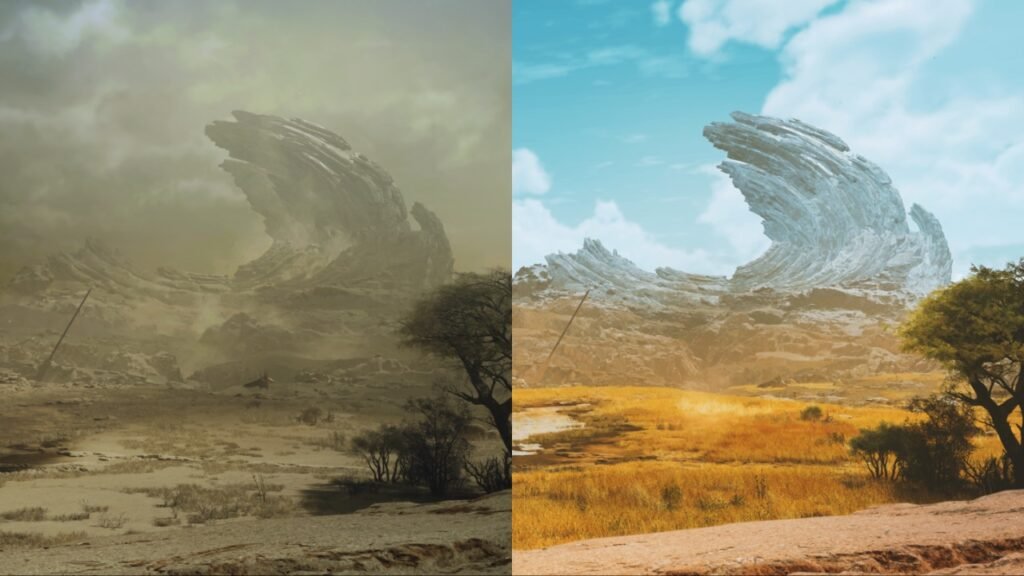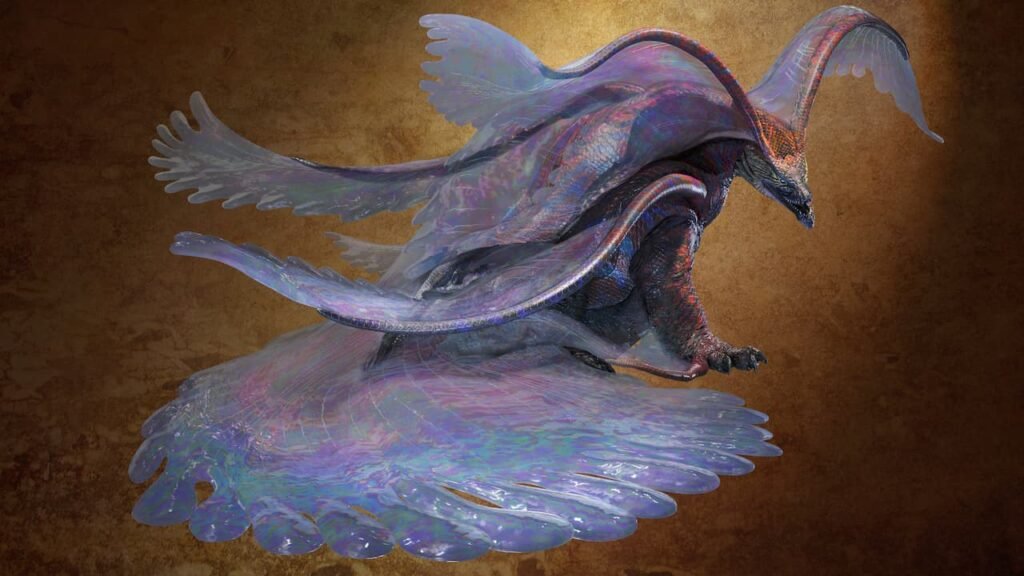Monster Hunter Wilds has a unique weather system where the environment cycles through three different phases that affect both the monster and the surrounding ecology differently. These weather systems are: Fallow, Inclemency, and Plenty.
The cycle starts with a Fallow period, which then turns Inclement, and finally becomes Plenty. Each weather state will have a significant impact on your hunts, so you must have a firm understanding of what each of them brings to the open world.
Therefore, if you are looking to learn about everything there is about the weather system in Monster Hunter Wilds, then the guide below will help you out.
What are the Fallow and Plenty weather states in Monster Hunter Wilds?

The Fallow and Plenty are completely opposite weather states that are separated by a phase of Inclemency in Monster Hunter Wilds.
When the weather is in Fallow, resources in the open world will be scarce for both the hunter as well as the small and large monsters that inhabit the area. This will mean that you will find fewer materials to gather during exploration and monsters will often be seen fighting over resources.
A state of Plenty, on the other hand, is a period of abundance. Here will be flora and fauna flourishing all over the place. You will see a lot of Herbivores emerging out of their hideouts and a lot of other large carnivores looking to prey on them.
What is an Inclemency Weather Event in Monster Hunter Wilds?

An Inclemency is a meteorological phenomenon in Monster Hunter Wilds which differs based on the locale that you are on. It marks the transition from Fallow to Plenty and is an intense weather condition that can bring out certain conditions to the area.
During Inclement weather, you are likely going to experience heavy rain and thunderstorms. It’s also the phase when Apex Monsters are likely going to appear more.
List of all Inclemency Events in Monster Hunter Wilds
Here is a list of all the Inclemency Events that you will be able to experience in Monster Hunter Wilds:
1) Sandtide (Windward Plains)

The Inclemency Event in the Windward Plains is called the Sandtide. When this occurs you will notice massive thunderstorms blowing across the plains with streaks of lightning flashing across the sky and at times striking the ground at random.
With the Sandtide Inclemency weather, you will see the appearance of Rey Dau as well. Rey Dau is the apex monster of the Windward Plains who uses the power of electricity in its attacks. It mimics the effects of the Sandtide to a great extent.
2) Downpour (Scarlet Forest)

Downpour is unique to the Scarlet Forest. When it occurs, you will experience heavy rainfall in the area which will flood most of the locale. The leviathan Uth Duna emerges during this event and is the apex monster of the Scarlet Forest that you will get to take on.
3) Firespring (Oilwell Basin)

During the Firespring Inclemency, the Oilwell Basin will be covered in magma and the fires will blaze out through the basin. The Everforge will come to life during this time, and you will see the emergence of Nu Udra which is the apex of the region.
Note: The list is a work in progress and we will update it when we find information on all the other regions and Inclemencies.
How to check the weather in Monster Hunter Wilds
You will be able to check the current state of the weather in a locale by opening the Map. When you scroll through the area, you will be able to display the current weather as well as how long it will take for it to change again.
Another way of spotting which weather state your current locale is in is by looking at the bottom-left corner of your screen right next to the minimap. The icon there will indicate the current weather period that the locale is in.
